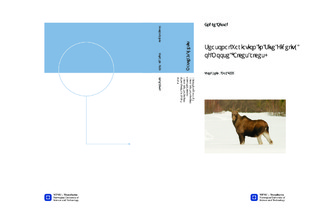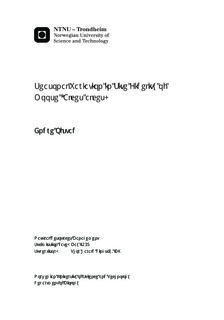| dc.description.abstract | Species across many taxa display site fidelity, the tendency to return to previous used areas, particularly during important periods of life, such as at mating and reproduction. In general, it is expected that familiarity to an area is beneficial, and the ability to return to the same area for specific life history events should therefore have a fitness benefit. Efficient wildlife management relies on good knowledge about the tendency of the target species to display site fidelity. Here, I investigated to what extent moose show seasonal variation in site fidelity and to what extent site fidelity was related to sex, reproductive status and the tendency to conduct seasonal migration. I expected site fidelity to vary according to the costs and benefits of sex and reproductive status, and that site fidelity in spring and autumn was low due to large annual variation in important environmental conditions (green-up and snow fall). Absolute site fidelity was measured as the distance between the location on a given date and the location on the same date the following year, where a short distance indicates high site fidelity. I also calculated a relative measure of site fidelity as the absolute site fidelity after accounting for individual space use. The results revealed that site fidelity was highest in summer and lowest in autumn. Resident moose displayed higher site fidelity than migratory and females more than males, whereas no differences were found between reproductive statuses of females. During the rutting/hunting period, males showed considerably lower site fidelity than females, while there was no difference between females of different reproductive status. These results suggest that the accuracy of predicting an individual's location from one year to the next varies with sex and movement strategy and is particularly low for migratory male moose in autumn. The results may have several implications for management. For instance a more precise population estimates can be obtained by performing censuses during the period of the year with high site fidelity, i.e. late summer or mid-winter. Furthermore, as the migratory part of the population may show large annual variations in local densities it is essential that knowledge exists about the general movement patterns in the population. Combined, these aspects call for a large-scale management of Norwegian moose populations. | nb_NO |

